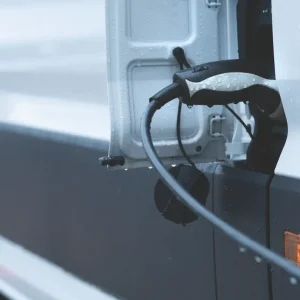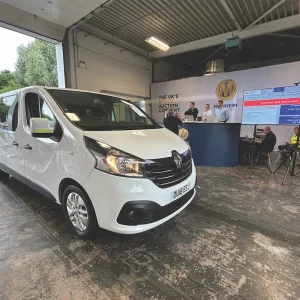The heavy van sector is the largest division of the market in volume terms and with the CV market steadily returning to strength following the slump, sales of new vans weighing 2.5t-3.5t led the charge in the plate-change month of March with a year-on-year increase of 25% to 23,500.
Commenting on the rise, SMMT boss Paul Everitt says: “March delivered continued recovery in van registrations with heavy vans leading the way.”Everitt believes there are signs of some operators turning to large vans over smaller models in order to achieve greater efficiency through maximising load capacity.
With the potential for volume growth in the sector, competition is tough, but there is clear daylight between the market leaders and those hungry for a larger slice of the pie. In 2010 Ford sold 26,590 large Transits, according to Jato, ahead of the Mercedes Sprinter on 14,852, which itself was a long way clear of a trailing pack led by the Renault Master on 4093. This year Ford is putting Euro5 emissions standard engines into the Transit. The brand says Econetic versions of the Transit can reduce consumption and CO2 by 10%. It claims the new LWB?Econetic, coming this year, delivers fuel cost-savings of £1600 over 80,000 miles compared with the standard model.
VW enjoys considerable success in the light and medium van segments with the Caddy and Transporter respectively but lags behind in the large van sector. The launch of its revised Crafter in September or October could lead to the biggest shake-up in the market this year as the brand aims to grow its share.
UK boss Simon Elliott says: “It’s the only segment where we don’t get a double-digit share, so it’s a chance to grow volume in a sector where we underperform.”
The new Crafter will get the four-cylinder, 2.0-litre common rail TDI engines now used in the Amarok, Caddy and Transporter. The current model is powered by the Euro5, five-cylinder, 2.5-litre Blue TDI engines, which have already gained Enhanced Environmentally friendly status. VW says power outputs will remain comparable with the new engines installed but torque will rise. It also claims the new Crafter could produce CO2 emissions as low as 195g/km and cut consumption by 33%. Weight savings from the new engines should also raise payload capacities, which currently range from 1011kg to 2434kg. Bluemotion low-CO2 technology and a start/stop system will be introduced after launch.
Renault has recently added a range of conversions to the new Master that went on sale in the UK in May 2010. The brand is confident the addition of rear-wheel drive models will raise its profile in a sector where it has previously tended to slip below the radar of some operators.
Darren Payne, Renault’s CV boss, reckons the new Master Tipper and Dropside in particular will attract more interest in the construction market. “Our aim is to double our share of the conversions market to 8%,” he said.
Renault has appointed 20 approved convertors in the UK and displayed the full range of Master conversions at the CV Show in April. This includes the factory-built box van, dropside, tipper and minibus and the locally converted Luton and curtainside. The new Master is powered by a 2.3 dCi unit, which comes in 100, 125 and 150hp.

Nissan’s NV400, a sister vehicle to the Renault Master, will go on sale in the UK towards the end of 2011 as a replacement for the Interstar.
“It will be a step up from the Interstar in terms of load space and size,” claims Nissan UK’s CV sales and marketing director Francis Bleasdale.
James Douglas, the company’s UK fleet and LCV boss, says the NV400 represents a “huge opportunity” for the brand. It will be introduced with nine body styles, including chassis cab and double cab, and with a choice of four lengths, three heights and three trim levels.
“We’ve never had a vehicle with this many derivatives – it takes us into an area of the market we haven’t been able to compete in before,” adds Douglas.
Citroen has recently expanded its Ready to Run Relay line-up with the addition of the new Supertrucks low-loading high-cube Space Van. The range now includes minibuses, glass carriers, low loaders, temperature-controlled vans, tippers, dropsides and Lutons. PSA stablemate Peugeot has also introduced tipper and dropside conversions to its Boxer heavy van line-up. Euro5 diesel engines will be phased in between October 2011 and March 2012.
Fiat is to launch a new Ducato, fitted with Euro5 engines, later this year. The Ducato was the brand’s best-selling van in the UK last year with 2909 units leaving showrooms.
The green kings
In partnership with Zeta Automotive, Mercedes has pioneered a fuel-saving speed-limiting device on its enduringly popular Sprinter. Branded Excelarate, the system works by suppressing the speed of unladen vans to make them drive as they would when carrying a 60% load.
By mimicking the behaviour of a careful, economical driver, Mercedes reckons Excelarate will deliver fuel savings of about 10%. The brand says the device is ideally suited to motorway journeys, complementing its Eco Start stop/start system, which is designed for use in cities.
A Sprinter chassis cab also serves as the base for the Bevan Group’s lightweight, aerodynamic Luton body for large vans unveiled at the CV Show. Bevan claims the body, dubbed the Icon, saves at least 9% on fuel compared with conventional Lutons. It costs about £5500.
As part of its drive to offer an economical choice across all sectors of its range, Vauxhall introduced the Movano Ecoflex at the start of the year. Based on the 3.3-tonne L2H2 2.3 CDTI 100hp derivative, it delivers a claimed CO2 output of 202g/km and hosts energy-saving features such as manually operated windows, door mirrors and door locking, a tyre repair kit instead of a spare wheel and a 56mph speed limiter.
This year the Movano range gets a six- and a nine-seater combi, a 17-seater minibus and a SWB L1 panel van in two roof heights. Vauxhall is currently offering a free spec upgrade to retail and small business customers, which includes air-conditioning, trip computers, upgraded CD/radio and alarm.
Used view
According to Glass’s, clean 3.5t vans are holding up well on the used market while scruffy, high-mileage versions are treated with contempt.
Late year models from Vauxhall, Renault, Fiat, Iveco and PSA are in demand, Glass’s says, but the front runners remain the Sprinter and Transit with even high-mileage examples attracting strong interest.
Limited numbers of Crafters on offer, with many having been overworked, has led to prices falling.





